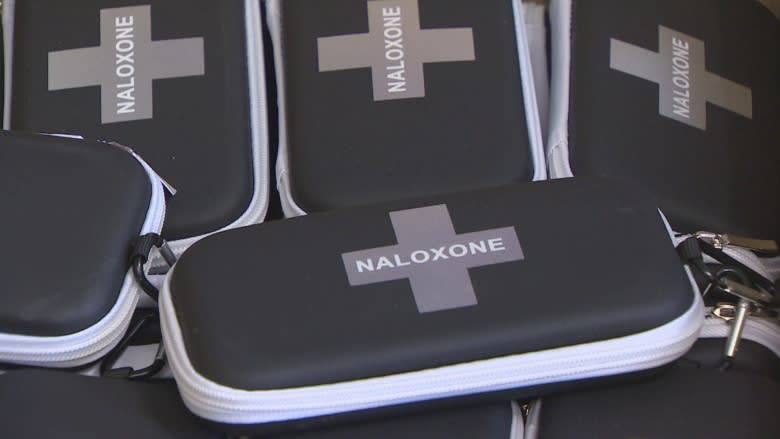Nal-Pal: The app that could save you from an opiate overdose

When Derek Jacoby got his naloxone kit, he was trained to spot the alarming signs of an opiate overdose, like shallow breathing or blue-tinged lips.
Armed with that knowledge and the compact kit in his pocket, he was ready to save a life.
But then a year went by, and he realized he'd never so much as opened it — "Even though we'd certainly been within 100 metres of someone needing a kit," Jacoby said.
So Jacoby and his tech-savvy colleagues at the University of Victoria plotted a way to alert naloxone carriers to overdoses nearby.
Meet Nal-Pal, the mobile app awarded $15,000 over the weekend at the South Island Prosperity Project Open Innovation Challenge.
When it's finalized, Jacoby hopes Nal-Pal will identify nearby naloxone kits and alert the people trained to use them.
Naloxone, which comes in injectable and nasal spray forms, is available for free at pharmacies across B.C. It works by temporarily blocking opioid receptors in the body and relieving overdose symptoms for a short window of time.
It's been a front-line weapon against skyrocketing overdose deaths across the country.
Jacoby plans to hire students with the award money to help out with coding. Overall, he added, they've had lots of support: IBM donated cloud-server time to help out the crew, and small tech companies in Victoria contributed expertise.
"We're open-sourcing all this development effort," he said, adding that, with all the input and funding, he's hoping for a working prototype by June and a fully-functional product by the end of the year.
Early in the game, he said, the team had to dodge an accessibility hurdle. At-risk populations, Jacoby says, often don't have data plans. "We had to think of an architecture that would allow the app to work over text messages."
Then, he continues, there's the problem of getting people to actually download it.
Jacoby thinks finding app users through a sign-up process after naloxone training shouldn't be a challenge. "You take the course, because you want to save lives," he said.
People using unregulated drugs, on the other hand, present a barrier in terms of locating and educating them about the app.
But Jacoby remains optimistic Nal-Pal will catch on, if only due to the heightened danger of consuming potent drugs such as fentanyl or carfentanil.
"Everyone who's using street opiates these days knows that they're taking their life in their hands. So, they have a real motivation to do anything they can to make themselves safer," he said.
A shift in where people use drugs, he says, exacerbates the need for Nal-Pal.
"In the last year and a half there's been a switch in who's dying," he pointed out, citing his partner's observations as a front-line worker. "More and more, it's people dying at home alone, who aren't using around other people."
An app could create those connections, he added. "It's important to build a community around people who are isolated."
With files from CBC Radio One's All Points West

 Yahoo Finance
Yahoo Finance 